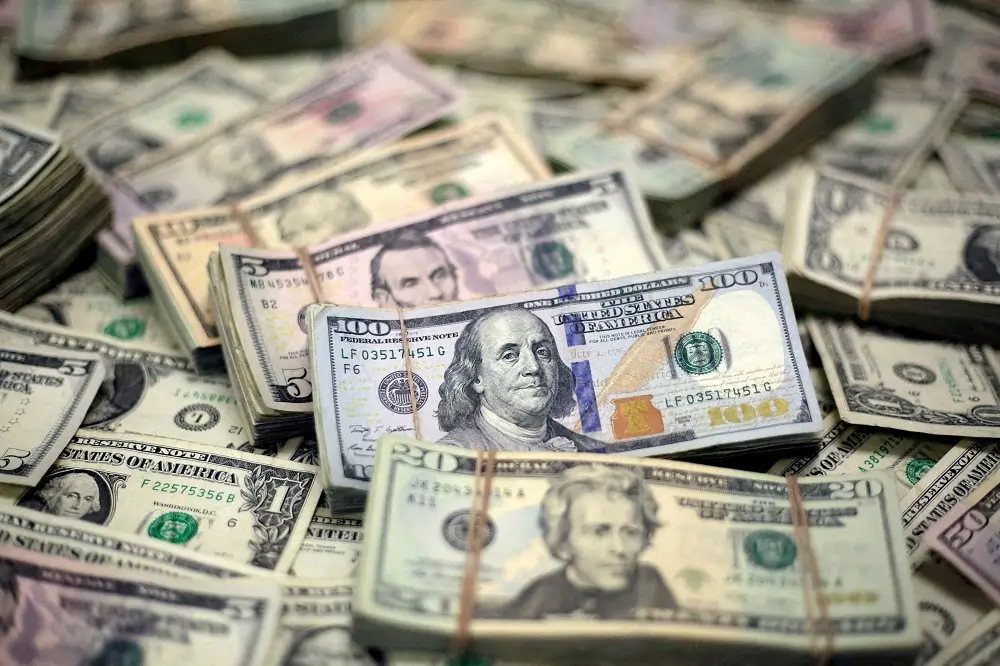
By Alden Bentley and Medha Singh
NEW YORK/LONDON (Reuters) – The dollar held steady near seven-week highs against major currencies on Tuesday as investors assessed the outlook for further U.S. rate cuts, with concerns about the conflict in the Middle East and China’s economy lending support.
The U.S. data calendar is relatively light this week, but investors will seek trading signals from Wednesday’s release of the minutes from the Federal Reserve’s September meeting, when officials almost unanimously agreed to cut rates by 50 basis points, as well as Thursday’s September Consumer Price Index report.
The euro inched 0.05% higher to $1.0979, still near the seven-week low of $1.09515 hit last week. The pound edged 0.17% higher to $1.3104, after hitting a three-week low of $1.30595 on Monday.
Traders have shifted their expectations of monetary easing from the U.S. Federal Reserve this year. A strong jobs report last week gave credence to Fed Chair Jerome Powell’s comments that the central bank would stick to its usual quarter-percentage-point rate reductions after it began its easing cycle with September’s big cut.
Federal Reserve Bank of New York President John Williams, a permanent vote of the Fed’s rate-setting Committee, echoed Powell’s comments, telling the Financial Times in an interview that ran on Tuesday he did not consider the September move “as the rule of how we act in the future”.
Markets are ascribing around a 90% chance of a 25-basis-point reduction in November, the CME FedWatch tool showed and some now bet on no cut at all. Just 50 bps of easing is priced in by December, down from more than 70 bps a week earlier.
That has helped the currency surge to multi-week highs against the euro, sterling and the yen. The yen, however, clawed back some of the losses on Tuesday as rising geopolitical worries led investors to a flight towards safe-haven assets.
The dollar index, which measures the U.S. currency against major rivals, slipped 0.3% to 102.45.
“If soft enough, Thursday’s CPI update could eventually help (in) calming the Fed doves’ nerves and prevent the U.S. dollar from stepping into the medium-term bullish consolidation zone against many majors,” said Ipek Ozkardeskaya, senior analyst at Swissquote Bank.
“If not, the no-November-cut pricing could take off, and that would mean higher yields, a stronger U.S. dollar across the board, weaker other currencies, and some negative pressure on equity valuations.”
The benchmark 10-year U.S. Treasury yield remained above 4%, having touched the level on Monday for the first time in two months as traders curtailed wagers on big rate cuts. [US/]
Meanwhile, the Chinese yuan dropped against the dollar, while stock markets returned with a strong open after a week-long holiday break, but finished well off their highs as a lack of detail dented optimism around stimulus measures.
“That huge rally that we saw for Chinese equities and the yuan has kind of come to a stop this morning. So risk sentiment isn’t super great today,” said Helen Given, associate director of trading at Monex (USA) in Washington, DC. “That’s why the yen is up a little bit against the dollar but most other G10 currencies are relatively flat.”
Dollar/yen eased 0.07% to 148.07, after slumping to a seven-week low of 149.10 on Monday on concerns that the Bank of Japan would would be raising rates in the near term.
In other currency pairs, the dollar rose to its highest price since Aug. 19 against the Canadian dollar and was last up 0.27% at C$1.3653. The Australian dollar slid 0.46% to US$0.6725, delving its lowest since Sept. 16.
(Reporting by Ankur Banerjee in Singapore and Medha Singh in London; Editing by Jamie Freed, Sherry Jacob-Phillips, Emelia Sithole-Matarise and Barbara Lewis)


